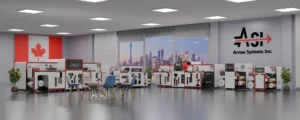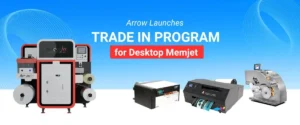Table of Contents
Reducing Costs of Digital Printing Inks and Label Materials
When it comes to manufacturing and printing labels, one of the major concerns for any company is cost. In today’s competitive market, it is essential to find ways to reduce expenses without compromising on quality.
Digital printing inks and materials can be quite expensive, posing a significant challenge for companies in the printing industry. Digital printing inks are often more expensive than traditional offset or flexographic inks due to their specialized formulations and advanced properties. These inks often require specific characteristics such as durability, color vibrancy, and resistance to various environmental factors.
Label materials for digital printing can be expensive when considering factors such as adhesion, tear resistance, and compliance with regulations. The combination of pricey inks and specialized label materials can result in elevated production costs. This makes it crucial for businesses to explore cost-saving strategies without compromising on quality.
In this blog post, we will explore the cost factors associated with digital printing inks and label materials. We will provide valuable insights on how to lower these costs while maintaining excellent results.
Choosing the Right Digital Printing Inks:
Selecting the appropriate digital printing inks can significantly impact your overall costs. Consider the following tips:
- Understand your requirements: Different applications demand different types of inks. Assess your printing needs, such as durability, resistance to UV light or chemicals, and the desired aesthetic outcome. This will help you choose the right ink formulation for your specific needs, avoiding unnecessary expenses.
- Quality over price: While cost is an important consideration, compromising on ink quality can lead to poor print results. Poor print results may increase wastage and reprints. Choose inks from reputable manufacturers that offer a balance between cost and performance.
- Ink consumption control: Optimize your printer settings and software to minimize ink usage. Adjusting ink density, resolution, and print mode can help reduce costs without affecting readability or image quality.
Exploring Label Material Options:
Label materials play a crucial role in the overall cost of your printing operations. Here’s how you can lower expenses without sacrificing quality:
- Material selection: Analyze your labeling requirements and choose materials that match your needs precisely. Consider factors such as durability, adhesion, and environmental considerations. Avoid over-engineering labels with unnecessary features that can drive up costs.
- Bulk purchasing: Collaborate with suppliers to negotiate better prices by ordering materials in bulk. This can lead to significant cost savings in the long run.
- Waste reduction: Optimize Label design and printing processes to minimize material waste. Streamline label dimensions, optimize spacing between labels, and reduce unnecessary color usage. This approach not only reduces material costs but also makes it more sustainable.
- Use what you have: If you switch from flexographic to digital, the materials used for both may not be compatible. Arrow Systems Inc created a primer that enables the use of flexographic materials on digital printers with WBIJ topcoat requirements. Instead of buying all new materials, you can use the primer, and save money in the process.
Efficient Production and Workflow:
Besides selecting the right inks and label materials, optimizing your production and workflow can contribute to cost savings:
- Maintenance and calibration: Regularly maintain and calibrate your printers to ensure optimal performance. Proper maintenance reduces the risk of costly repairs and prolongs the lifespan of your equipment.
- Production planning: Efficient production planning minimizes downtime and reduces costs of operation. Implement production scheduling systems that optimize machine use, reduce idle time, and prevent bottlenecks.
- Automation and integration: Explore automation options to streamline your labeling process. Integrated solutions like the ArrowJet Nova 330R, an all-in-one system, save time and lower labor costs. These systems can automate printing and cutting processes.
Conclusion:
Lowering costs for digital printing inks and label materials is possible. You can achieve this by carefully considering your specific needs and implementing cost-effective strategies.
To accomplish this, start by selecting the right inks and label materials, optimizing your production and workflow, and minimizing waste. By doing so, your company can achieve significant cost savings while maintaining high-quality printing results.
Embracing these cost-saving measures not only improves your bottom line but also strengthens your market position. It can ensure your business is sustainable long-term.
Keep in mind that every penny saved on ink and label material costs brings you closer to reaching your business goals. Additionally, it enables you to provide exceptional printed labels to your customers.
Contact With Our Team Now

Breaking News: Arrow Systems Partners with BUSINESSWARE to Transform Digital Printing Across Greece & Cyprus

Sid Sistemas de Impresión in Spain Installs ArrowJet Aqua 330R and DPR Taurus to Bolster Label Production

Step Inside Innovation: Arrow Systems New Experience Center Opens in Ontario, Canada.


